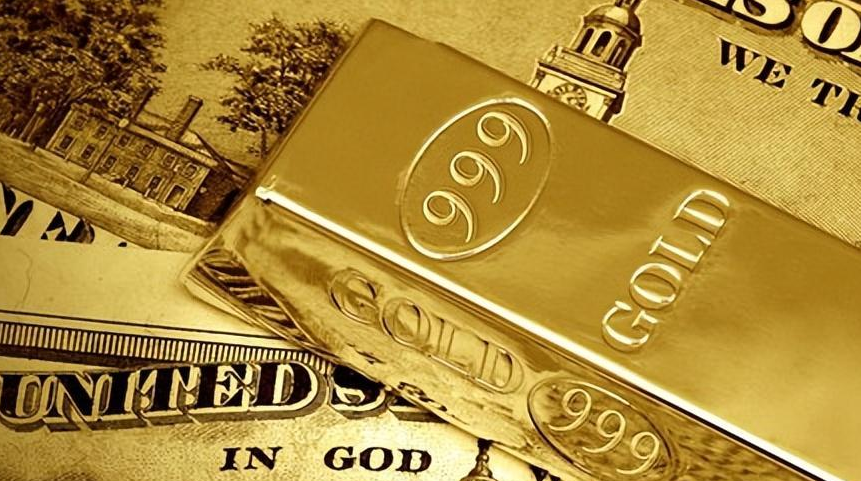Surge in Chinese Assets Drives Gold Prices Skyward
Advertisements
On July 26,the U.S.stock market witnessed a significant uptick following the release of key economic data that indicated a steady inflation trend in the country.This data included a notable decline in the Personal Consumption Expenditures (PCE) price index for June,which is of particular importance to the Federal Reserve.The PCE index showed a year-on-year increase of just 2.5%,reaching its lowest level in five months,alongside the announcement of stronger-than-expected GDP growth for the second quarter.In light of these developments,investor sentiment turned optimistic regarding the prospective easing of U.S.monetary policy,pushing all three major indexes in the stock market upward.By the end of trading,the Dow Jones Industrial Average soared by 1.64%,while both the S&P 500 and the Nasdaq Composite climbed over 1% as well.Notably,popular Chinese stocks rallied,contributing to a 1.22% rise in the Nasdaq Golden Dragon China Index.
A closer inspection of the data reveals that as of the market close on July 26,the Dow Jones had risen by 1.64%,settling at 40,589.34 points.The S&P 500 added 1.11%,closing at 5,459.1 points,while the Nasdaq Composite experienced a slight increase of 1.03%,ending at 17,357.88 points.However,when viewed from a broader weekly perspective,the performance was mixed,with the Dow accumulating a modest weekly gain of 0.75%,whereas the Nasdaq and S&P 500 indices recorded declines of 2.08% and 0.83%,respectively.
All sectors of the S&P 500 ticked upward,which analysts interpreted as a sign that investors are beginning to bet on the idea that the Fed's easing cycle could continue to propel U.S.corporate growth.Financials,industrials,and consumer staples significantly outperformed technology stocks throughout July.The Russell 2000 index,which tracks small-cap stocks,surged by 1.7% and finished the month up over 10%.Investors are increasingly optimistic about small-cap stocks given their significant debt burdens,and they see potential advantages for these stocks in an environment of lower rates following potential Fed cuts.
Technology stocks also indicated a predominantly positive trend.Noteworthy movements included Apple inching up by 0.22%,Amazon gaining 1.47%,while Netflix saw a slight decline of 0.43%.Interestingly,even mighty tech giants like Google dropped by 0.17%,yet Meta rose impressively by 2.71%,and Microsoft climbed by 1.64%.Moreover,chipmakers witnessed collective gains,with ASML rising by 2.99%,Qualcomm increasing by 2.66%,and Micron Technology also on an upward trend with a 1.82% rise,keeping investor interest strong in this vital tech segment.
Further examination into popular Chinese stocks reflected a robust upward trend,with the Nasdaq Golden Dragon China Index soaring by 1.22%.Notable performances included Lufax Holdings,which surged by 6.73%,and DaJian Cloud,climbing by 6.2%.Meanwhile,other players such as Gaotu Techedu and Canadian Solar saw gains of 5.83% and 5.74%,respectively.Not all stocks in the electric vehicle sector fared well,showing mixed results with NIO up by 3.63% and XPeng up by 3.78%,while Li Auto slipped by 0.31%.
On the data front,the U.S.Department of Commerce released figures showcasing a cooling in the PCE price index.The core PCE price index,which excludes food and energy,increased by 2.6% year-on-year,aligning with market expectations.This data set painted a picture of relatively stable inflation in the U.S.,sparking market anticipation that the Fed would hold interest rates steady during its July deliberations while potentially considering rate cuts in September.
Additionally, the University of Michigan’s consumer sentiment index for July fell to a new eight-month low,dropping from June’s reading of 68.2 to 66.4.Analysts attribute this persistent decline in consumer confidence to ongoing economic uncertainties.While inflation may be showing signs of a downward trend,modest wage growth continues to plague many,particularly low-income households,impacting their financial stability severely amidst elevated prices.
the University of Michigan’s consumer sentiment index for July fell to a new eight-month low,dropping from June’s reading of 68.2 to 66.4.Analysts attribute this persistent decline in consumer confidence to ongoing economic uncertainties.While inflation may be showing signs of a downward trend,modest wage growth continues to plague many,particularly low-income households,impacting their financial stability severely amidst elevated prices.
In commodities,gold prices showed strength,with spot gold reaching as high as $2,390 per ounce during the day.According to reports,COMEX gold futures rose by 1.37% to $2,385.7 per ounce,while London gold advanced by 0.96% to $2,386.890.Silver also reflected a minor increase,as COMEX silver futures gained 0.34%.Investors often turn to gold as a safe haven in times of economic uncertainty,rising inflation expectations,and potential shifts in monetary policy.As the odds of Fed interest rate cuts grow,the opportunity cost of holding gold diminishes,leading to increased allocations towards this precious metal as a hedge against market volatility.
In the crude oil market,however,prices stumbled under the weight of concerns surrounding future demand.On the same trading day,international oil prices took a hit,with light crude futures for September delivery on the New York Mercantile Exchange falling by 1.43%.Moreover,Brent crude futures decreased by 1.51%.For the week,light crude futures at the NYMEX experienced a total decline of 3.71% while Brent also saw a notable dip of 1.82%.
In other market segments,U.S.Treasury yields fell across the board,reflecting the market’s reaction to economic data.The two-year yield dropped 4.5 basis points to 4.394%,while the three-year yield fell by 5 basis points to 4.206%.The five-year yield decreased 5.1 basis points to 4.085%,the ten-year yield fell 4.6 basis points to 4.2%,and the thirty-year yield dropped 3.1 basis points to 4.456%.These movements signal a potential shift in investor sentiment,aligning with expectations of a stable or potentially decreasing interest rate environment.
Across the Atlantic,on the same day,major European indices recorded gains as well.With a general easing of global market sell-off pressures and favorable U.S.inflation data enhancing optimism for interest rate cuts,European stocks bounced back after experiencing two consecutive days of losses.The UK's index increased by 1.21%,France’s climbed by 1.22%,and Germany's market saw an uptick of 0.65%.This rally in European markets reflects the interconnectedness of global financial systems,where changes in the U.S.economy resonate across the Atlantic.
Leave a Reply